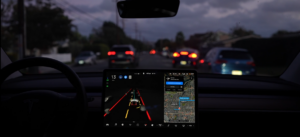Autonomous vehicle will be in a few years a key agent in mobility. However, there are still open questions not only technical but ethical, social and practical.
SUaaVE project aimed to make a change in the current situation of public acceptance autonomous vehicle.
It has permitted significant advances in this field via:
-
-
- Understanding if we are ready to accept the coexistence of autonomous vehicles.
- Making autonomous vehicle behavior more human like.
- The development of systems that permit the autonomous vehicle to drive in a more sensitive manner.
- And facilitating tools to OEMs and TIERs to implement the project results in their developments.
-

Which factors have influenced the acceptance of autonomous vehicles?
A set of focus groups with the participation of almost 100 people and more than 5000 surveys of different user profiles such as drivers’ pedestrians and cyclists have offered a complete vision of the coexistence of vehicles and other agents to understand how to pave the road.
Acceptability factors and ethics dilemmas have been included, understanding the behavior that users can consider as appropriate for these vehicles.
Tests on road using Wizard of Techniques have revealed fundamental results to increase the trust in autonomous vehicles.
Understanding how the passengers feel is the key to develop an empathic and sensitive vehicle, making autonomous vehicle behaviour more human like. Almost 400 tests with the participation users have been carried out with this purpose.
An EMPATIC MODULE, sensitive to the passenger state, has been developed in SUaaVE. This EMPATIC module is composed by:
-
-
- An EMOTIONAL MODEL that predicts the emotional state of passengers from their physiological response, estimating the arousal and valence in real time, that means, the intensity of the emotion and whether this is positive or negative.
- A COGNITIVE MODEL to understand the level of attention and awareness of the driver.
- And an OBSERVATIONAL MODEL to consider how external factors of the trip (traffic environment and ambient conditions) influence in the passenger mood.
-
The HUMAN MODULATED VEHICLE RESPONSE, called ACE, is controlled by a module that regulates the vehicle response in such a manner that the passenger feels that the vehicle has really understood their feelings and needs. ACE is formed by:
-
-
- An interface, COGNITIVE SMART ASSISTANT, that adapts its information to the emotional and cognitive state of the passenger
- Three different DYNAMIC COMFORT MODES that the vehicle modifies depending on the driver mood
- A set of AMBIENT COMFORT SETTINGS that changes its light, noise control and windows opacity adapted to the emotional state of the passenger
-
Finally, a powerful tool to develop and analyze acceptance and scenarios of autonomous vehicle has been developed. It allows to configure different environments and automation levels from 1 to 5.
SUaaVE, a successful initiative, has opened a new highway for the consolidation of an empathic and human centered autonomous vehicle that will, for sure, increase the acceptance, safety and comfort of future mobility.



